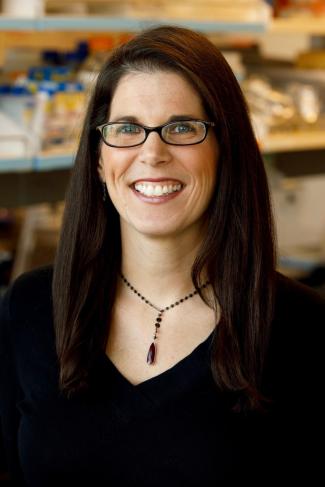Link to Google Scholar Profile page
Recent publications (†denotes advised student):
2025 Romero, J.L., Ratliff†, J.H., Carlson, C.J., Griffiths, D.R., Miller, C.S., Mosier, A.C., and T.R. Roane. Community and functional stability in a working bioreactor degrading 1,4-dioxane at the
Lowry Landfill Superfund Site. Applied and Environmental Microbiology.
https://doi.org/10.1128/aem.00574-25
2025 Borton, M.A., McGivern, B.B., Willi, K.R., Woodcroft, B.J., Mosier, A.C., Singleton, D.M., Bambakidis, T., Pelly, A., Daly, R.A., Liu, F., Freiburger, A., Edirisinghe, J.N., Faria, J.P.,
Danczak, R., Leleiwi, I., Goldman, A.E., Wilkins, M.J., Hall, E.K., Pennacchio, C., Roux, S., Eloe-Fadrosh, E.A., Good, S.P., Sullivan, M.B., Wood-Charlson, E.M., Miller, C.S., Ross,
M.R.V., Henry, C.S., Crump, B.C., Stegen, J.C., and K.C. Wrighton. A functional microbiome catalog crowdsourced from North American rivers. Nature, 637: 103-112.
2024 Hasinoff*, A.A., Bolyard, W., DeBay, D., Dunlap, J.C., Mosier, A.C., and E. Pugliano. “Success was actually having learned”: University student perceptions of ungrading. Teaching and
Learning Inquiry, 12 (January), DOI: 10.20343/teachlearninqu.12.5. *Lead author; All other authors listed in alphabetical order with equal contributions
2021 Lantz†, M.A., Boddicker†, A.M., Kain†, M.P., Berg†, M.C., Wham†, C.D., and A.C. Mosier. Physiology of the nitrite-oxidizing bacterium Candidatus Nitrotoga sp. CP45 enriched from a Colorado river. Frontiers in Microbiology, 12:709371.
2020 Park, S., Andrei, S., Bulzu, P., Kavagutti, V.S., Ghai, R., and A.C. Mosier. Expanded diversity and metabolic versatility of marine nitrite-oxidizing bacteria revealed by cultivation- and genomics-based approaches. Applied and Environmental Microbiology, 86(22): e01667-20.
2020 Wise†, B., Roane, T.M., and A.C. Mosier. Community composition of nitrite reductase gene sequences in an acid mine drainage environment. Microbial Ecology, 79(3): 562-575.
2019 Subotic†*, S., Boddicker†*, A.M., Nguyen†, V.M., Rivers†, J., Briles, C.E., and A.C. Mosier. Honey bee microbiome associated with different hive and sample types over a honey production season. PLoS ONE, 14(11): e0223834. *Contributed Equally.
2019 Tolar, B.B., Mosier, A.C., Lund, M.B., and C.A. Francis. Nitrosarchaeum. In Bergey's Manual of Systematics of Archaea and Bacteria (eds W. B. Whitman, F. Rainey, P. Kämpfer, M. Trujillo, J. Chun, P. DeVos, B. Hedlund and S. Dedysh). doi:10.1002/9781118960608.gbm01289
2018 Boddicker†, A.B., and A.C. Mosier. Genomic profiling of four cultivated Candidatus Nitrotoga spp. predicts broad metabolic potential and environmental distribution. In Press. The ISME Journal. DOI: 10.1038/s41396-018-0240-8
2017 Ramanathan†, B., Boddicker†, A.M., Roane, T.M., and A.C. Mosier. Nitrifier gene abundance and diversity in sediments impacted by acid mine drainage. Frontiers in Microbiology, 8: Article 2136.
2016 Mosier, A.C., Miller, C.S., Frischkorn, K.R., Ohm, R.A., Li, Z., LaButti, K., Lapidus, A., Lipzen, A., Chen, C., Johnson, J., Lindquist, E.A., Pan, C., Hettich, R.L., Grigoriev, I.V., Singer, S.W., and J.F. Banfield. Fungi contribute critical but spatially varying roles in nitrogen and carbon cycling in acid mine drainage. Frontiers in Microbiology, 7: Article 238.
2015 Mosier, A.C., Li, Z., Pan, C., Thomas, B.C., Hettich, R.L., and J.F. Banfield. Elevated temperature alters proteomic responses of individual organisms within a biofilm community. The ISME Journal, 9: 180–194.
2015 Smith, J.M., Mosier, A.C., and C.A. Francis. Spatiotemporal relationships between the abundance, distribution, and potential activities of ammonia-oxidizing and denitrifying microorganisms in intertidal sediments. Microbial Ecology, 69:13-24.
2015 Damashek, J., Smith, J.M., Mosier, A.C., and C.A. Francis. Benthic ammonia oxidizers differ in community structure and biogeochemical potential across a riverine delta. Frontiers in Microbiology, 5: Article 743.
2014 Justice, N.B., Li, Z., Wang, Y., Spaulding, S.E., Mosier, A.C., Hettich, R.L., Pan, C., and J.F. Banfield. 15N- and 2H proteomic stable isotope probing links nitrogen flow to archaeal heterotrophic activity. Environmental Microbiology, 16: 3224-3237.

